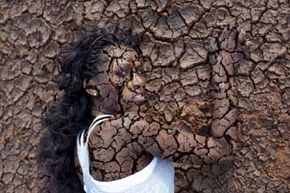With a hole growing in the ozone layer and garbage piling up in the world's landfills, there certainly is a need to protect the environment. But considering how smog hovers over large cities and chemicals manage to find their way into water supplies, humans also need to protect themselves -- including their skin -- from the environment.
From hives to skin cancer, both natural and manmade environmental factors have been linked to several skin conditions. Mother Earth's irritants can be broken into three main categories: physical, chemical and biological. Physical factors include sunlight, heat and cold. Chemical irritants include pollutants in the air and water, alcohol, household cleaners, allergens, car emissions, second-hand smoke, and other compounds. Biological bothers include plants like poison ivy, bacteria, fungi, pollens and pet dander [source: Suskind].
Advertisement
Your working environment could also affect the health of your skin. In 2006, a U.S. Bureau of Labor Statistics survey of occupational illnesses and injuries reported that skin diseases were the most widespread [source: Kravitz]. These types of problems are often caused or aggravated by a number of environmental factors, including physical conditions such as extremes in cold and heat, along with chemical or biological agents such as cleansers, solvents, metals or plants.
With all these irritants around, your skin works full-time to defend your body from their harmful effects. The outer layer, called the epidermis, helps keep water in your skin while working to keep harmful materials out [source: Yung]. However, while it's on guard duty, your skin is first in line for burns, rashes and diseases.
You probably know basic skin care rules, such as how your exfoliating scrub can irritate sensitive skin or how oils and bacteria can aggravate acne. But you should also be aware that even the air you breathe and the clothes you wear can cause some irritation. On the next page, find out just how harmful some environmental factors can be -- and learn how pain is the friend that can help you avoid them.
Advertisement

